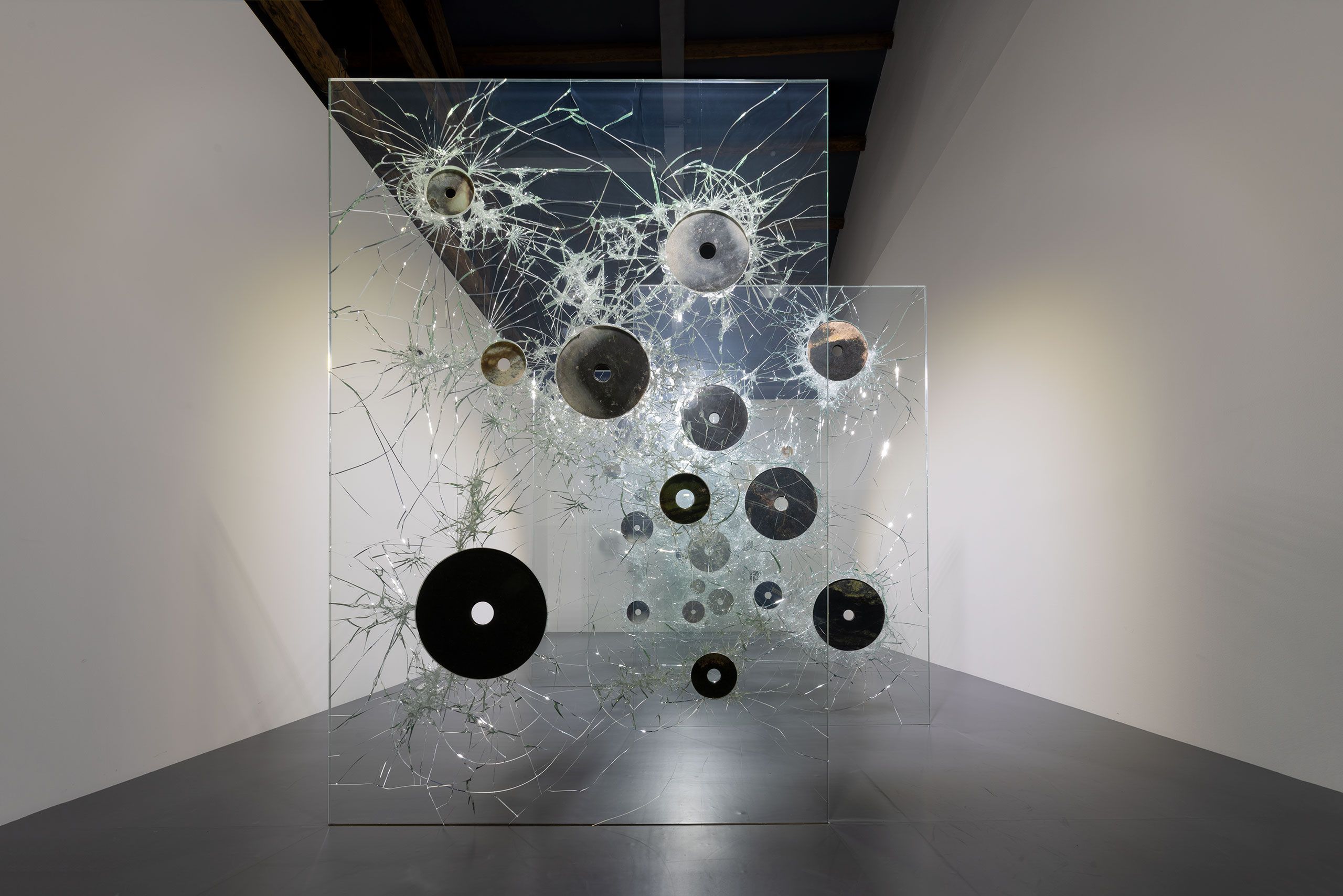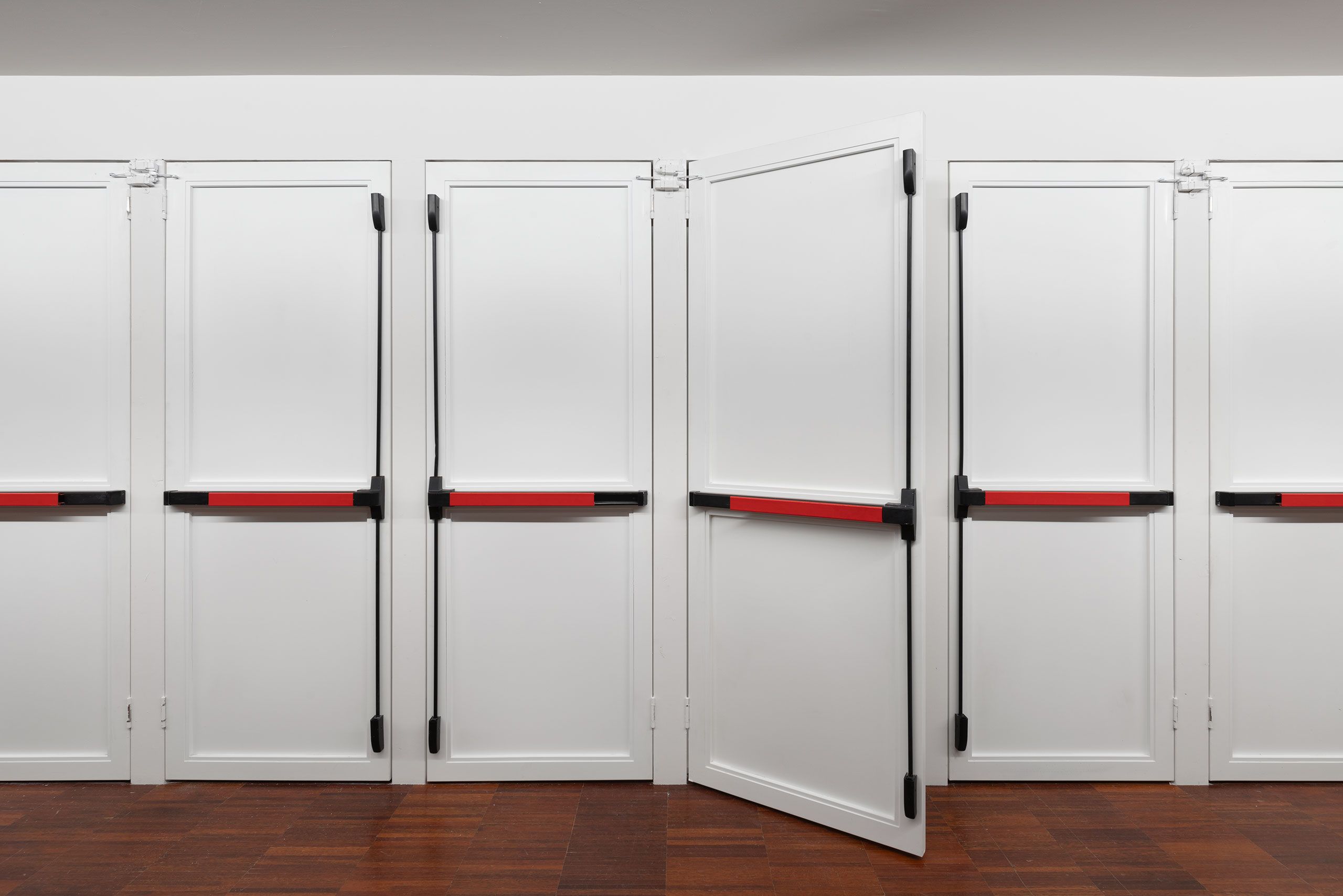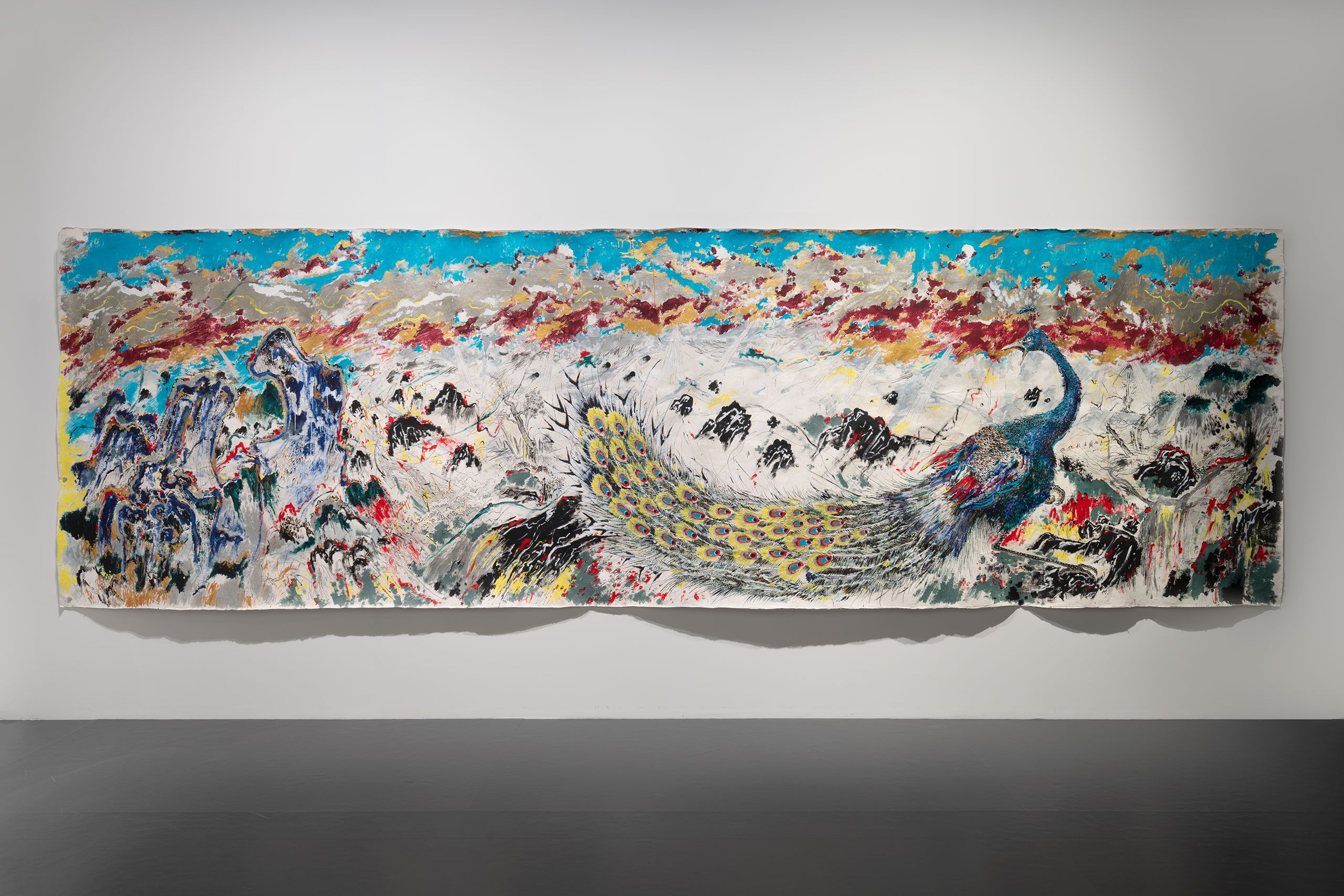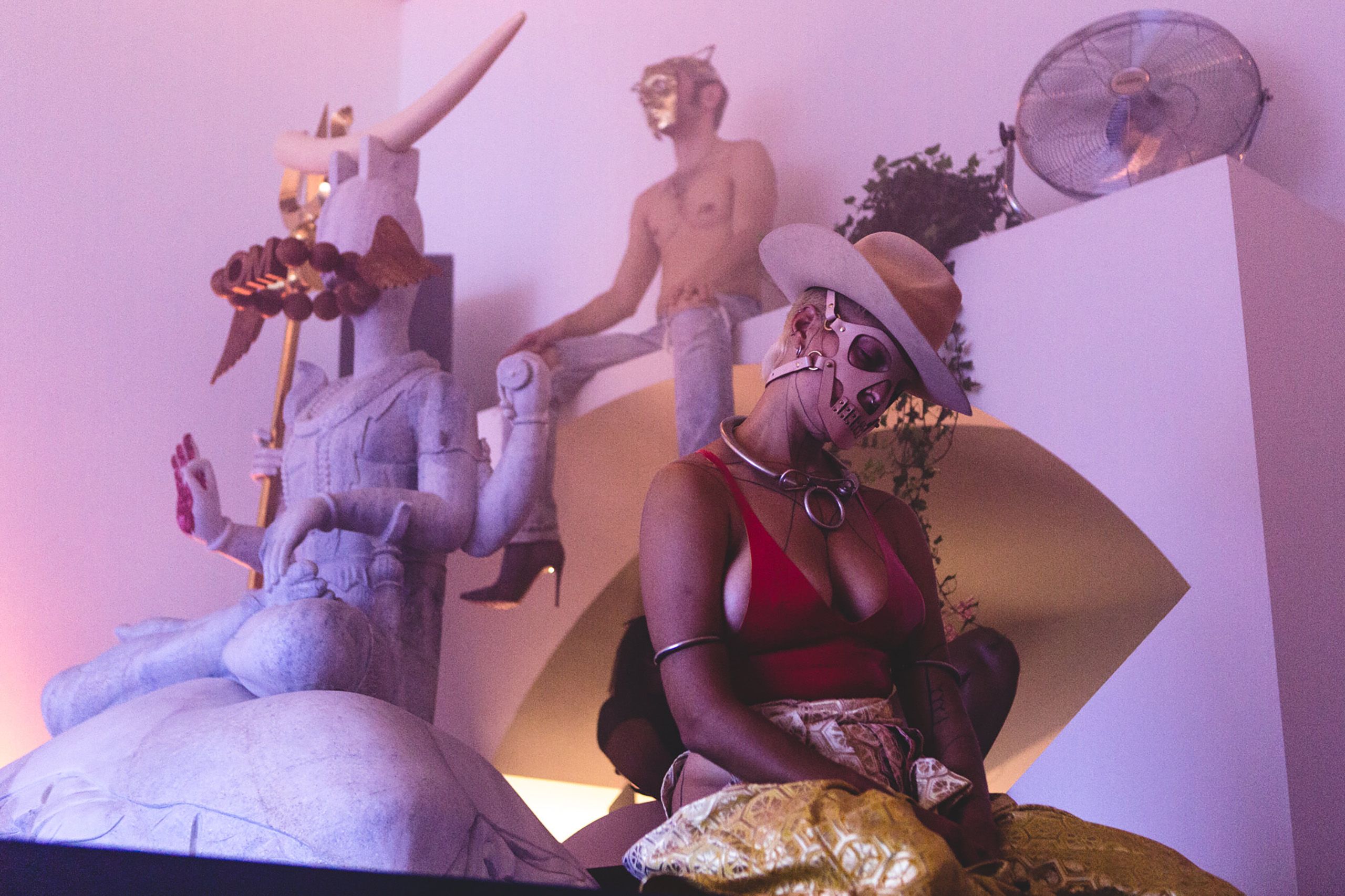
Grasping the dynamics of today’s Chinese art scene, Entropy explores the works of seven internationally recognized Chinese contemporary artists. Divided into seven sections, each dedicated to the work of one of the seven artists, the exhibition offers an insight into the complexity of the ever-evolving art scene in China today.
While the artists share the experience of being born and raised in a rapidly changing China marked by economic growth and cultural exchange, the exhibition allows each of their distinct voices to be heard. Like the scientific term “entropy,” which is a measurement of the number of possible states in a given system, the exhibition marks one voice of China, formed by many, and can be interpreted and experienced in various ways.
The seven artists were raised in China during different stages of economic reform. He An, Liu Wei, and Yang Fudong, all from the 70s generation, seek to translate the complexity of their rapidly changing environment into installations, paintings, sculptures, and video pieces. Their works originate from conflicting emotions, caused by clashes between urbanism and nature, as well as deeply-rooted traditions and a new modern reality – all of which the artists experienced first-hand during their youth.
From the early 80s generation, Faurschou presents artworks by Zhao Zhao and Sun Xun. Their installations contain references to politics, history, and mythology, with Zhao Zhao’s works using subtle means of expression, whereas Sun Xun takes a more overt approach.
Yu Ji and Chen Tianzhuo, both born in 1985, are the youngest artists in the group exhibition. Raised in a China that had acquired much greater wealth and stability than in previous generations, these artists integrate elements related to religious and everyday rituals through site-specific installations and performances.
The exhibition was met with wide critical acclaim when it was first presented at Faurschou in Beijing, 2018. Now, an altered version of the exhibition is opened in connection to la Biennale di Venezia.


He Taoyuan & Miho Yoshioka, What Makes Me Understand What I Know?, 2013
Neon light box installation
Dimension variable

He Taoyuan & Miho Yoshioka, What Makes Me Understand What I Know?, 2013
Neon light box installation
Dimension variable
He An
Liu Wei

The Stone, 2006
Books, Iron
260 x 260 x 260 cm

The Stone, 2006
Books, Iron
260 x 260 x 260 cm

The Stone, 2006
Books, Iron
260 x 260 x 260 cm
Yang Fudong
Sometimes I wonder... is the version of a film we see in the cinema its standard? What has been cut? What has remained? What has been lost? Where did they go?... Everything has happened, or is happening... perhaps... thus the process is the film.
Yang Fudong
Everything is in subversion, these forces of fission come from each being’s individual will.
Zhao Zhao

Jade-Constellations, 2018
Glass, jade disks
200 x 300 cm x 6 panels

Jade-Constellations, 2018
Glass, jade disks
200 x 300 cm x 6 panels

Jade-Constellations, 2018
Glass, jade disks
200 x 300 cm x 6 panels
If you are able to segregate yourself from reality, you will see cold and hot changes everywhere, as well as temperature and spectrum of substances.
He An
‘Standard’ is constantly changing. The crucial part is to perceive the changes, otherwise, whatever you do, you would feel miserable. I always feel the word indifference is good, only in this state I can feel the changes, and the changes are the premises for all the things, including our life and the art.
Sun Xun
Sun Xun
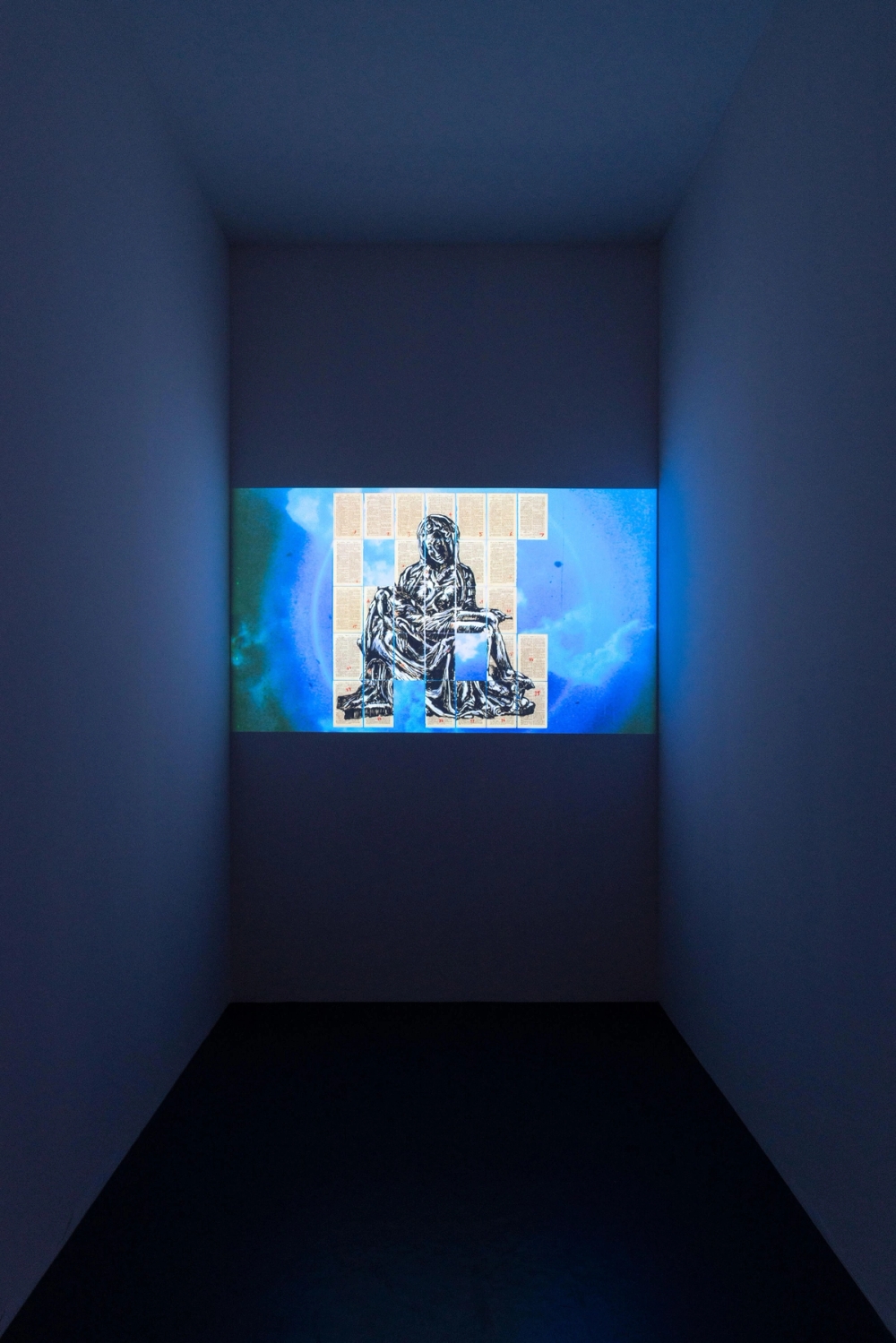
The Protestant, 2017
Single channel animation
Duration: 6:45 min

The Protestant, 2017
Single channel animation
Duration: 6:45 min

The Protestant, 2017
Single channel animation
Duration: 6:45 min
I hope that my recent works continue to develop in the context of ‘landscape quality’. In practice there are different “paragraphs” of sculpture, thereby creating a question of time where materials can express voice, voice can express time, time can express weight, and vice versa.
Yu Ji

Flesh in Stone: Ghost No. 2, 2018
Cement, plaster, iron
61 x 111 x 28 cm
Flesh is inherently weak, and the border between life and death is, as such, indistinct.
Chen Tianzhou

Bite, 2016
White marble, rosewood, resin, stainless steel, titanium plating, wolf pelt
90 x 60 x 123 cm

Scapegoat 01, 2015
Gold plated copper, medical model, imitation fur, LED plastic sword, styrofoam
210 x 130 x 118 cm
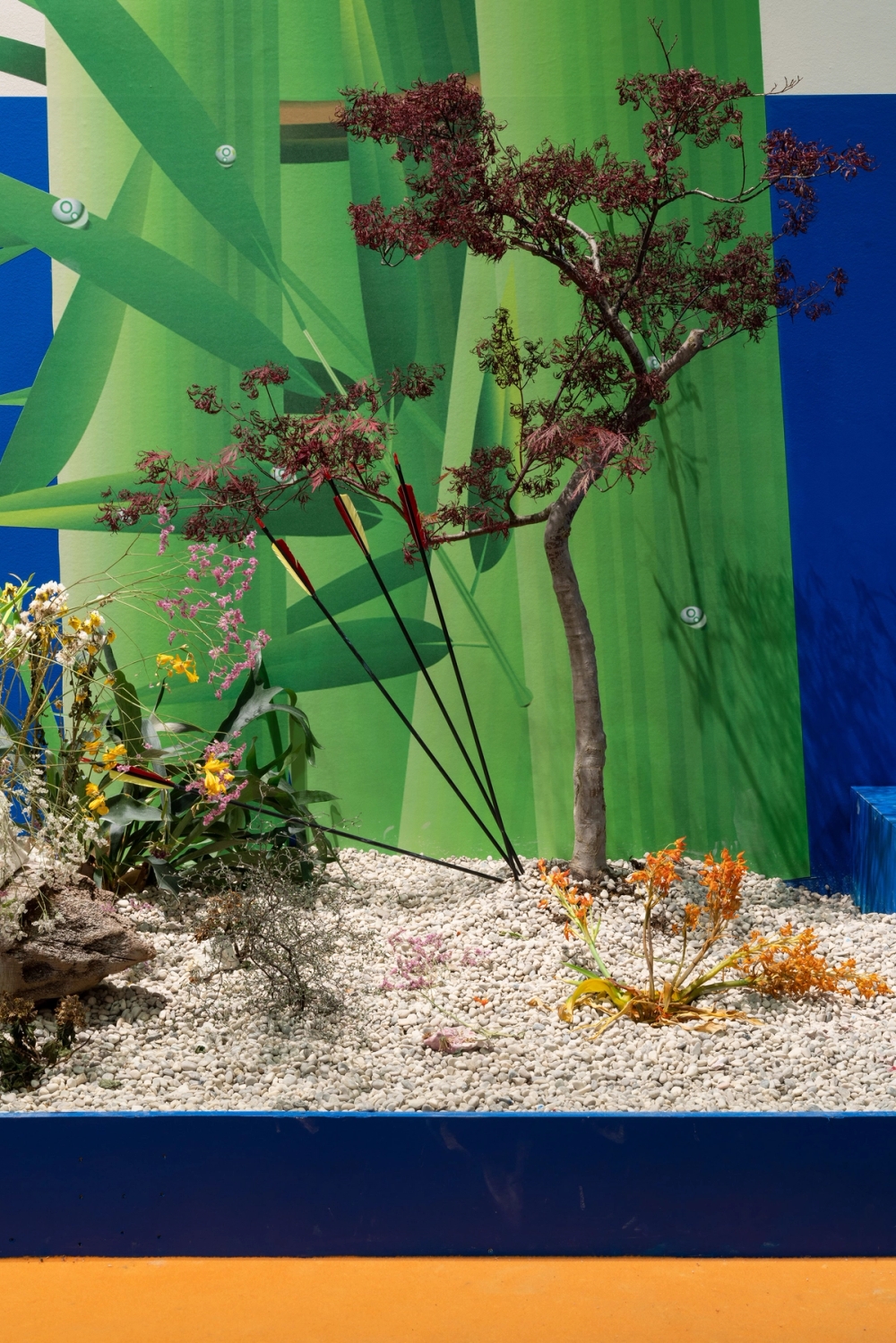
Chen Tianzhou. Installation view by David Stjernholm
Group Exhibition
Entropy






